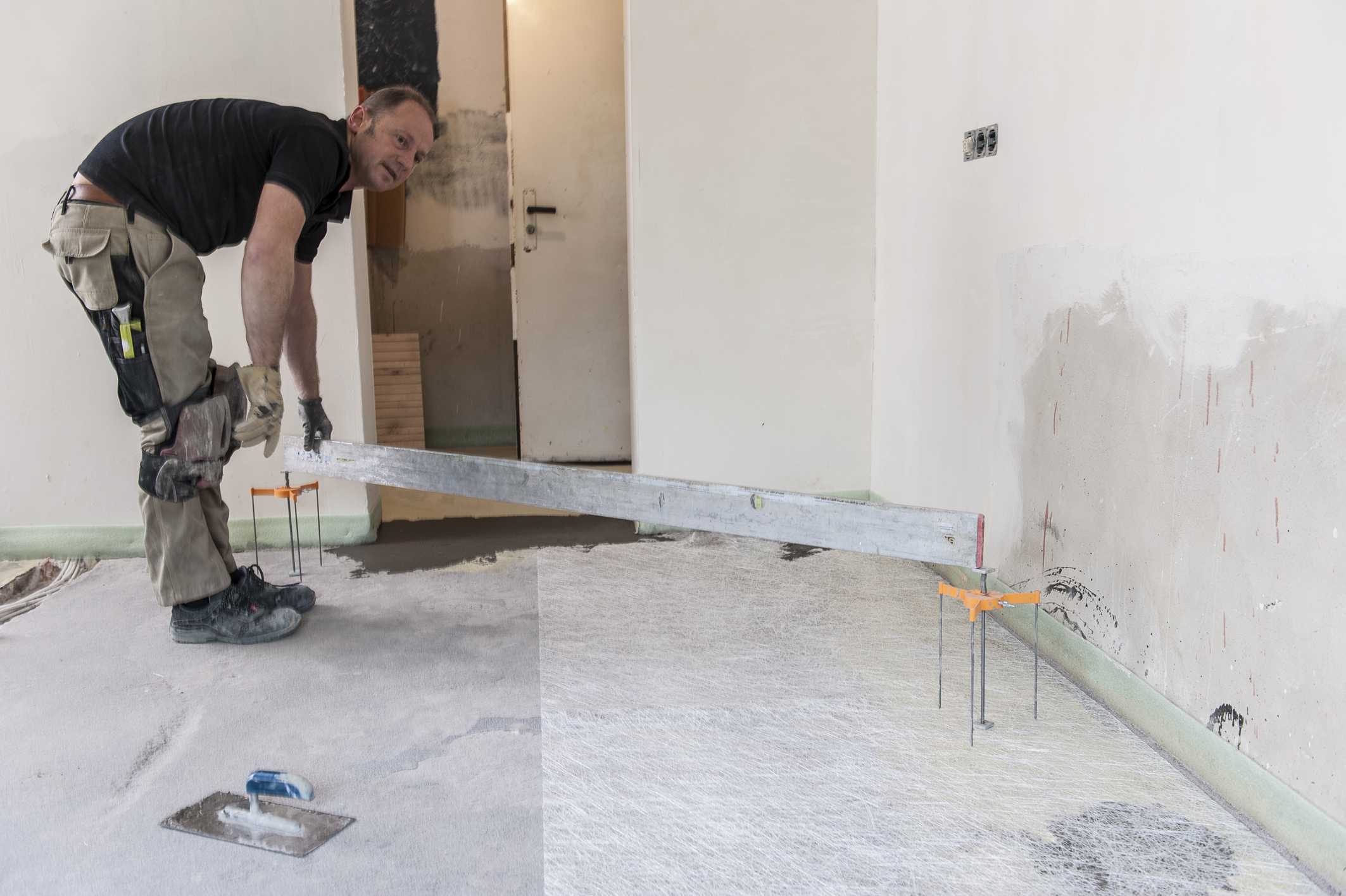Carefully prepare the substrate before flooring installation
In many private homes, replacement of the old floor coverings is necessary at some point. Musty carpets must be removed and old-fashioned ceramic tiles replaced, for example, by trendy large-format tiles or high-quality parquet flooring. The first step is the complete removal of the old flooring, including all adhesive residues. Before the new flooring can be installed, the substrate should always be carefully checked and prepared. A few simple tips can help.
Tip 1: Provide a level subfloor
An important precondition is a level subfloor. If the screed is not of uniform thickness and evenness, hard flooring materials such as parquet or laminate may later break if there is a hollow space underneath. Resilient floor coverings like carpet and vinyl flooring will adapt to unevenness, but may not look very attractive later on. In addition, uneven areas always carry the risk of tripping or slipping. That’s why floor coverings should be firmly bonded over the entire surface. In order to ensure optimum adhesion, the screed should be absolutely level. If there are cracks, holes or other defects, it is necessary to apply a levelling compound.
Tip 2: Never underestimate moisture
The substrate must also be sound. The adhesive will not adhere to a brittle, crumbling screed. The strength can easily be determined with the scratch test by scratching a grid (#) into the subfloor with a sharp metal object. There should be no flaking along the edges of the scratch lines.
Of key importance is a completely dry screed. The problem of moisture is often underestimated, especially in new buildings. If the residual floor moisture is too high, the adhesive fails to adhere. Moreover, moisture can promote the formation of mold and odor. How quickly the screed dries always depends on factors such as air humidity, temperature and thickness of the screed slab. Before installing the new floor covering, make sure to sweep and vacuum the subfloor so that no dirt particles can impair adhesion.
Tip 3: Choose EMICODE®-certified adhesives and building materials
In order to protect our indoor climate against the emission of pollutants from adhesives, levelling compounds or primers, it is advisable to employ building and installation products that bear the EMICODE® label. These products are only granted the EC1 seal if they meet the strictest emission limits. Their compliance with the limit values is checked by experts from independent laboratories and institutes. Thus, building owners and residents can be sure to enjoy a sustainable, healthy home.

Photo: GEV
Haben Sie Fragen?
Sollten Sie Fragen zu bestimmten Themen haben oder wollen uns aus einem anderen Grund kontaktieren, melden Sie sich gerne über Telefon oder E‑Mail bei uns.
Tel.: +49 211 / 843 449 – 01
info@emicode.com
Share article on Social Media:
